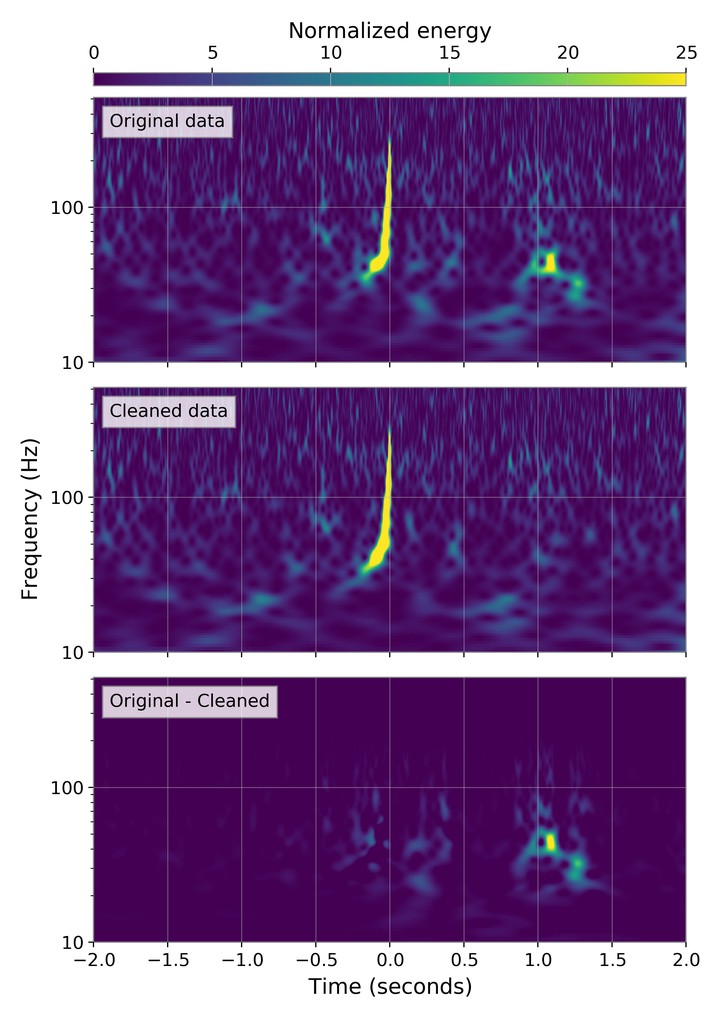Non-linear noise subtraction
 ML noise-removal algorithm removing the radio frequency noise.
ML noise-removal algorithm removing the radio frequency noise.Gravitational-wave noise can sometimes overlap an astrophysical signal in the gravitational-wave data. A perfect example is a binary black hole merger GW200129 which overlapped with a radio frequency noise. This noise introduced additional uncertainty when estimating binary black hole parameters: by some estimates, the binary was not highly precessing, while other estimates indicated that this was the highest precessing binary black hole ever observed.
Luckily, the radio frequency noise was also recorded by witness channels, i.e. the channels that record only this particular noise but not the astrophysical signal. I created a machine-learning algorithm that removed the radio frequency noise better than any other algorithm available at the time. As a result, we proved that GW200129 was indeed a highly precessing binary black hole.
For more, read our article on ArXiv: link.
The code is publicly available on my GitHub repository: link.